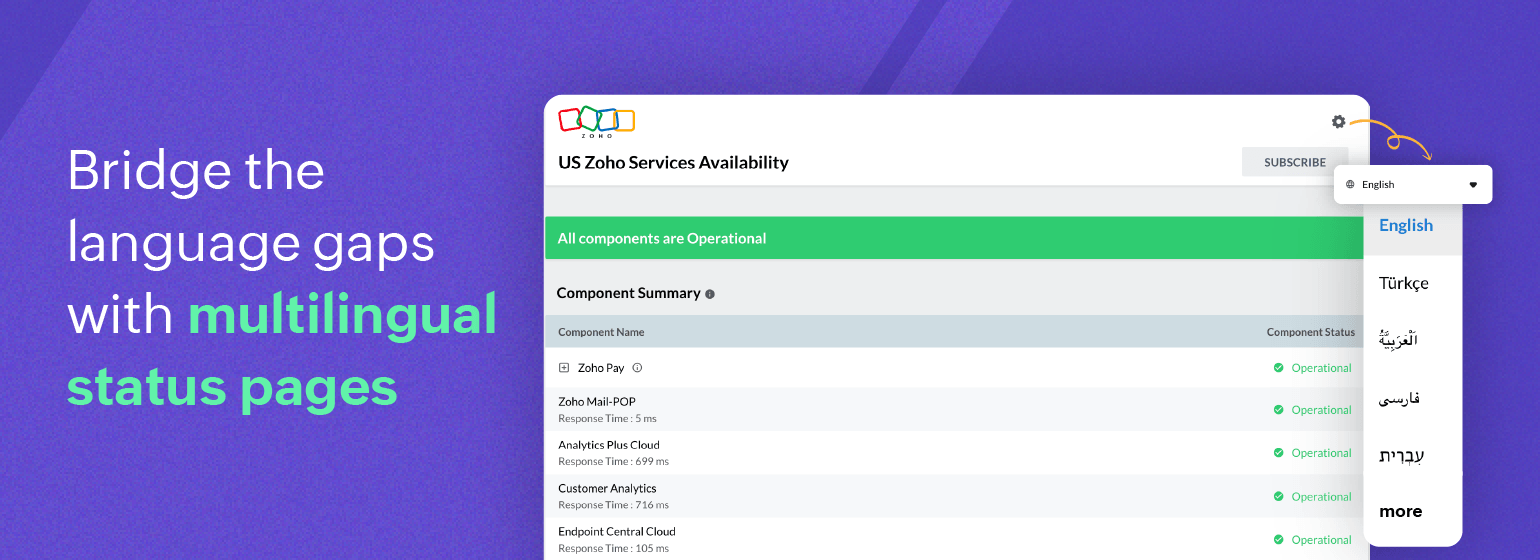Bridge the language gaps with multilingual status pages
In a world that values connectivity, businesses and online services cater to a diverse global audience. However, due to linguistic diversity, effective communication can become a challenge, especially during service disruptions or maintenance. A valuable solution to this issue is the implementation of a multilingual status page. This effectively bridges language gaps and ensures transparent communication with users across the globe.
When service disruptions occur, clear communication becomes paramount. Users want to know what's happening, why it's happening, and when they can expect a resolution. This underscores the significance of the status page, which delivers crucial information to users. Nevertheless, if the communication on these pages is not offered in their preferred language, they'll be unable to understand the underlying issue.
Let's explore how a multilingual status page helps bridge the language gaps and enhance overall satisfaction for users across the world.
The multilingual status page is a game changer
A multilingual status page ensures that information is accessible to users worldwide, regardless of their language proficiency. Some of the key benefits of having multilingual status pages are as follows.
Clears ambiguity
Users may not be able to understand the status of service disruptions as and when an incident is progressed towards restoration. With an easy-to-translate option, users can easily grasp an incident's status and maintenance schedules in their preferred language. This helps to reduce the risk of misunderstanding and ensures users are informed, even amid a service disruption.
Enhances user trust
Transparency in communication, especially during outages, builds trust. When users can understand the status of incidents in their preferred language, it fosters a culture of reliability and credibility for the service provider.
Adapts to regional preferences
Different regions may have specific linguistic preferences and cultural nuances. A multilingual status page enables businesses to adapt their communication to align with regional expectations, strengthening their connection with local user bases.
